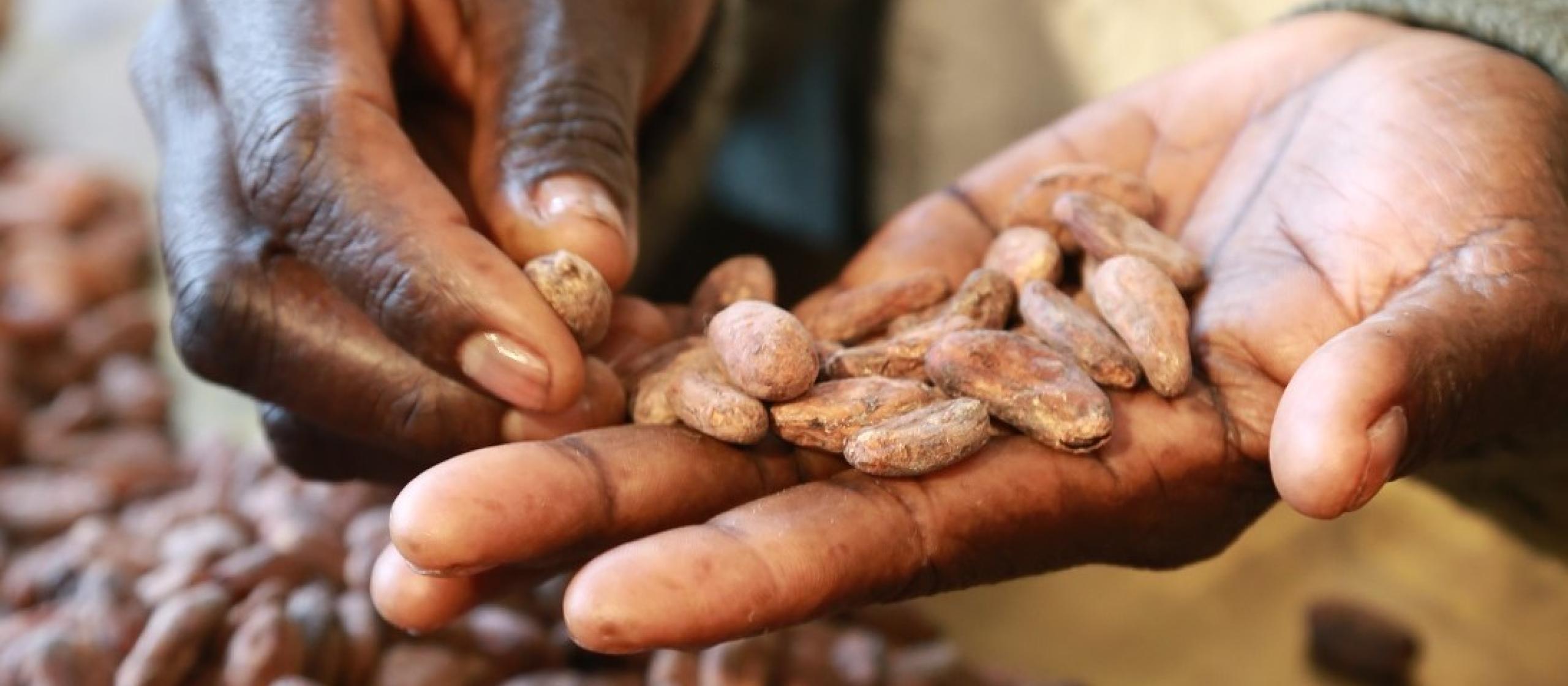- HomeHome
-
About ACIAR
- Our work
- Our people
-
Corporate information
- ACIAR Audit Committee
- Commission for International Agricultural Research
- Policy Advisory Council
- Agency reviews
- Executive remuneration disclosure
- Freedom of information (FOI)
- Gifts and benefits register
- Information publication scheme
- List of new agency files
- Contracts
- Legal services expenditure
- Privacy impact assessment register
- Commonwealth Child Safe Framework
- Benefits to Australia
- Careers
- 40 years of ACIAR
-
What we do
- Programs
- Cross-cutting areas
- Resources
- Where we work
-
Funding
- Research projects
- Fellowships
-
Scholarships
- John Allwright FellowshipScholarships to study in Australia for ACIAR partner country scientists to have Australian postgraduate qualifications
- ACIAR Pacific Agriculture Scholarships and Support and Climate Resilience Program
- Alumni Research Support Facility
- Publications
- News and Outreach
Date released
12 April 2019
Could artisan chocolate do for Bougainville what whisky has for Scotland?
Melbourne, for all its undoubted charms, is not usually associated with development in tropical agriculture. But when your product is the basis of that most urban and urbane of foods—chocolate—then the elegant Victorian state capital becomes a key location.
Steven and Elizabeth Saveke, cocoa growers from Siwai on the Papua New Guinean island of Bougainville, recently spent a week in Melbourne after winning the 2018 Bougainville Chocolate Festival competition.
Their prize trip was not a holiday, but an immersive and intensive week meeting Australian chocolate makers. The Australian makers received 20 kg samples of Steven and Elizabeth’s award-winning cocoa beans and used them to create innovative chocolate products that were shown and compared at a Taste and Tell event in Melbourne.
As festivals go, the Bougainville Chocolate Festival is serious business. It brings together cocoa farmers, buyers, researchers, government agencies, chocolate makers and marketers for the purpose of developing the cocoa industry in the Autonomous Region of Bougainville. And the best way for growers to develop high-quality cocoa is to compete in the arts of growing, drying and fermenting beans.
The competition is part of the ‘Developing the cocoa value chain in Bougainville’ project, which in turn is part of the Transformative Agriculture and Enterprise Development Program co-funded by the Department of Foreign Affairs and Trade and ACIAR.
Project leader, Professor David Guest of the University of Sydney, says the project has come a long way since the initial invitation to ‘train farmers to be better cocoa growers’.
‘My response was, “We can, but we don’t think that’s going to work”,’ he recalls. ‘Globally, there’s been a lot of investment in training farmers to be better at growing cocoa but average yields haven’t changed over 40 years. Instead, we took a broader approach and asked what were the constraints to smallholder farmers adopting new technologies and techniques.’
Aspects of this holistic approach ranged from selecting high-yield, high-quality cocoa varieties to identifying communities most suitable for cocoa growing; analysing the gender dynamics of cash crop agriculture (which can be complex in the matrilineal societies found in PNG); developing complementary income streams; and gaining a thorough firsthand understanding of rural Bougainville society. Some significant lessons emerged.
‘We found the wealthiest 20% of the population are the best educated, the healthiest and have the most diversified income. None of the other variables count,’ Professor Guest says. ‘As you can imagine, that’s a very powerful message that not only informs what we do, but is also powerful to communities, policy makers and governments.’
Autonomous Region of Bougainville project coordinator James Butubu says, ‘We in Bougainville are lucky to have this project that will have a high impact on the lives of Bougainvillean cocoa farmers’. Companion crops and animals were an essential part of diversifying income. ‘Cocoa growing involves a lot of waste materials, pruning trees and collecting diseased pods,’ Professor Guest says. ‘There’s no direct financial incentive to do this. If you include goats, they will eat those things and then there’s a direct incentive to prune and harvest, because that’s what feeds the goats. They then provide manure which is fertiliser for the cocoa.
Cocoa marketing expert, Grant Vinning, says the quality of Bougainvillean cocoa is improving year by year. ‘We’ve run three festivals now and each time the judges’ job has been harder, because the growers are listening to what the buyers, who judge the competition, say about their product,’ he says.
Vinning sees a tantalising analogy between cocoa and another agricultural product from a distinctive region: scotch whisky. ‘We’re trying to relate the product to the craft,’ he says, adding that cocoa can have regional flavours as complex and subtle as whisky, cognac or coffee.
He dreams of artisan chocolate becoming as lucrative for Bougainville as whisky is for Scotland.
‘You can break the world cocoa market into three areas. One is the bean-to-bar market. It’s very highly specialised, about 10% of the market, and price is a secondary consideration. A second level is craft-type chocolate, which takes up about 30%. The balance is the bulk market. We’re trying to carve out a niche in tier one and two.’ Vinning says, ‘We’ve already made a name in tier one,’ mentioning the Black Opal Bougainvillean chocolate by Canberra chocolate maker Jasper + Myrtle that won a gold medal at the 2017 Academy of Chocolate awards in London.
‘Bougainville cocoa can be the single malt of chocolate.’
Learn more about the project via the ACIAR website.















